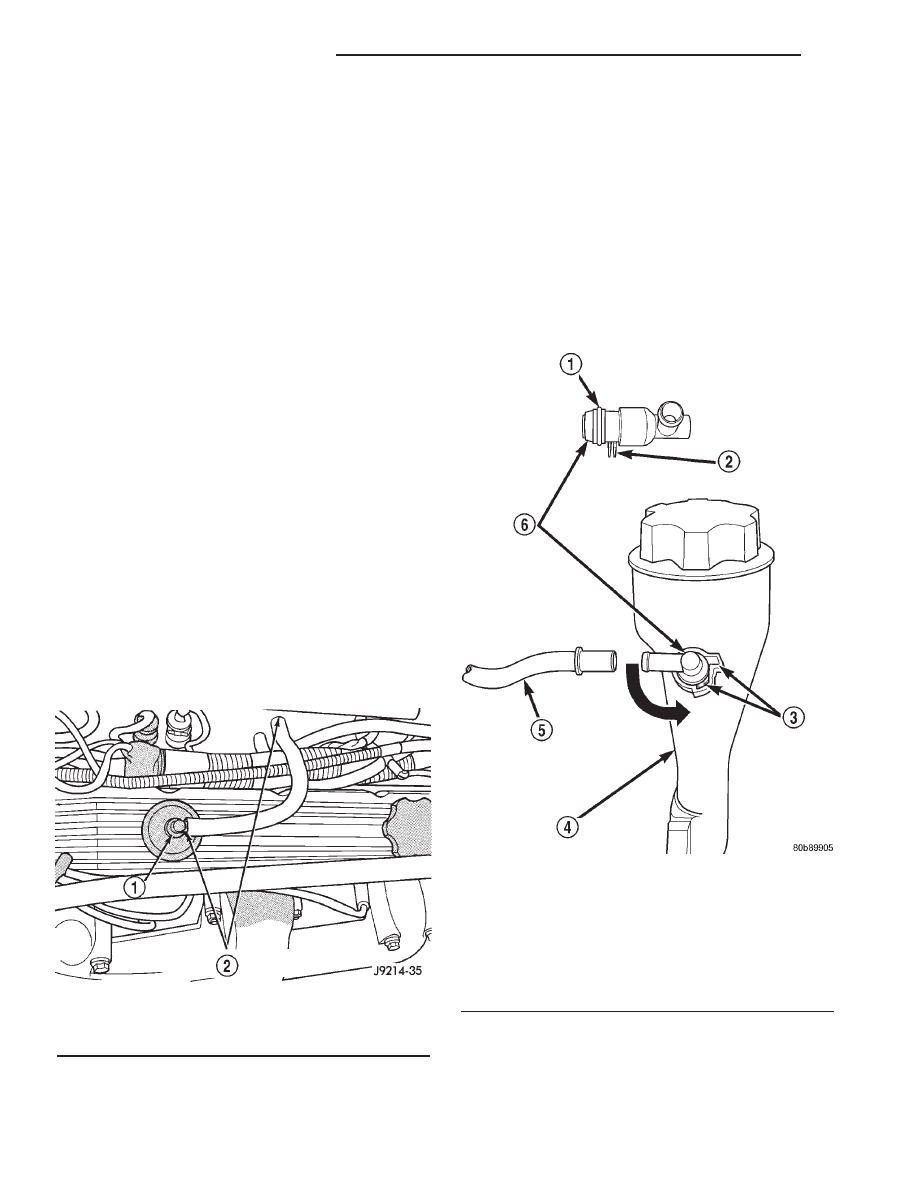Dodge Dakota (R1). Manual - part 811

purge solenoid for damage or leaks. If a leak is
present, a Diagnostic Trouble Code (DTC) may
be set.
(3) Connect electrical connector to LDP.
(4) Install battery tray. Refer to 8, Battery for pro-
cedures.
(5) Install PDC to fender and battery tray (snaps
on to battery tray).
(6) Install LDP filter to battery tray (one clip).
(7) Install connecting hose to bottom of LDP filter.
(8) Connect battery temperature sensor pigtail
wiring harness.
(9) Install battery. Refer to 8, Battery for proce-
dures.
(10) Connect negative battery cable to battery.
PCV VALVE
DESCRIPTION - 3.9L/5.2L/5.9L
All 3.9L V-6 and 5.2/5.9L V-8 are equipped with a
closed crankcase ventilation system and a positive
crankcase ventilation (PCV) valve. The 2.5L 4–cylin-
der engine is not equipped with a PCV valve. Refer
to Crankcase Ventilation System—2.5L Engine for
information.
This system consists of a PCV valve mounted on
the cylinder head (valve) cover with a hose extending
from the valve to the intake manifold (Fig. 8).
Another hose connects the opposite cylinder head
(valve) cover to the air cleaner housing to provide a
source of clean air for the system. A separate crank-
case breather/filter is not used.
DESCRIPTION - 4.7L
The 4.7L V-8 engine is equipped with a closed
crankcase ventilation system and a Positive Crank-
case Ventilation (PCV) valve.
This system consists of:
• a PCV valve mounted to the oil filler housing
(Fig. 9). The PCV valve is sealed to the oil filler
housing with an o-ring.
• the air cleaner housing
• two interconnected breathers threaded into the
rear of each cylinder head (Fig. 10).
• tubes and hose to connect the system compo-
nents.
Fig. 8 PCV Valve/Hose—Typical
1 - PCV VALVE
2 - PCV VALVE HOSE CONNECTIONS
Fig. 9 PCV Valve/Oil Filler Tube (Housing)—4.7L
Engine
1 - O-RING
2 - LOCATING TABS
3 - CAM LOCK
4 - OIL FILLER TUBE
5 - PCV LINE/HOSE
6 - PCV VALVE
25 - 28
EVAPORATIVE EMISSIONS
AN
LEAK DETECTION PUMP (Continued)